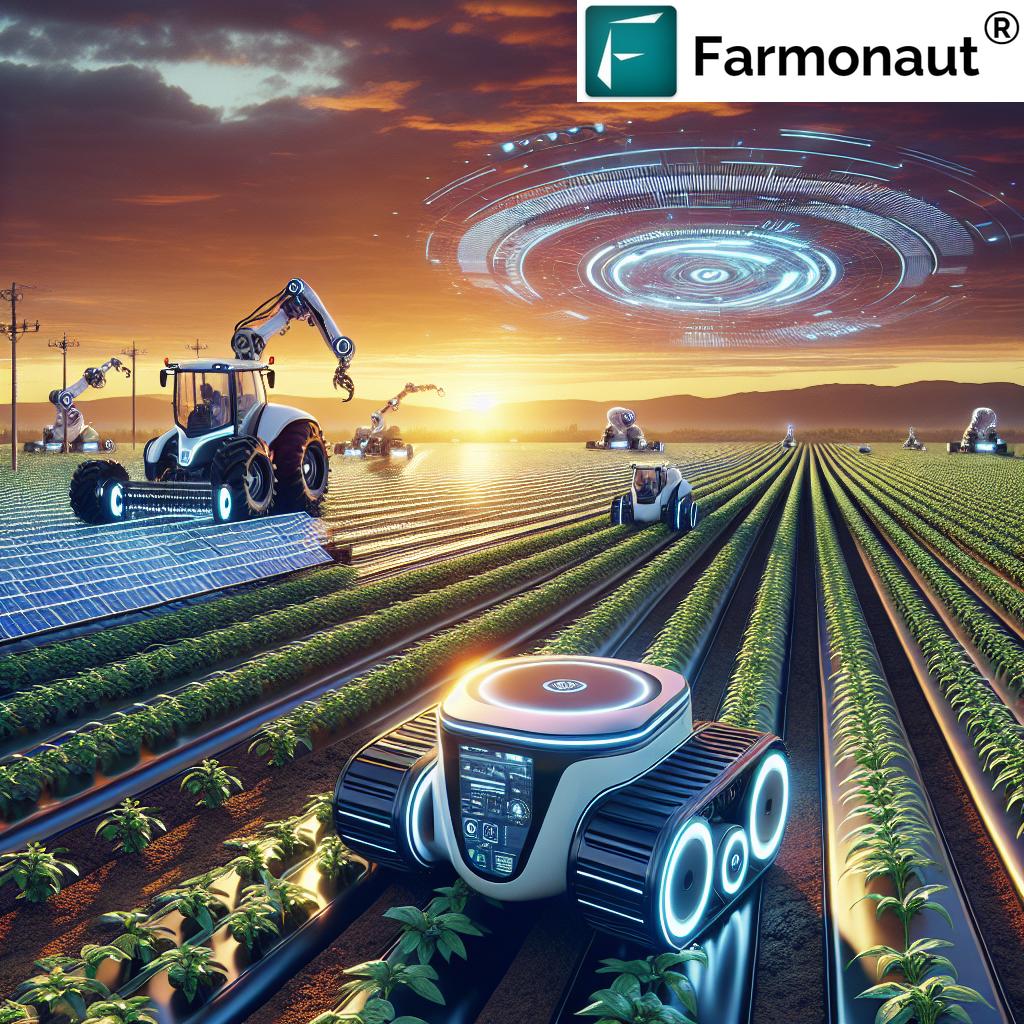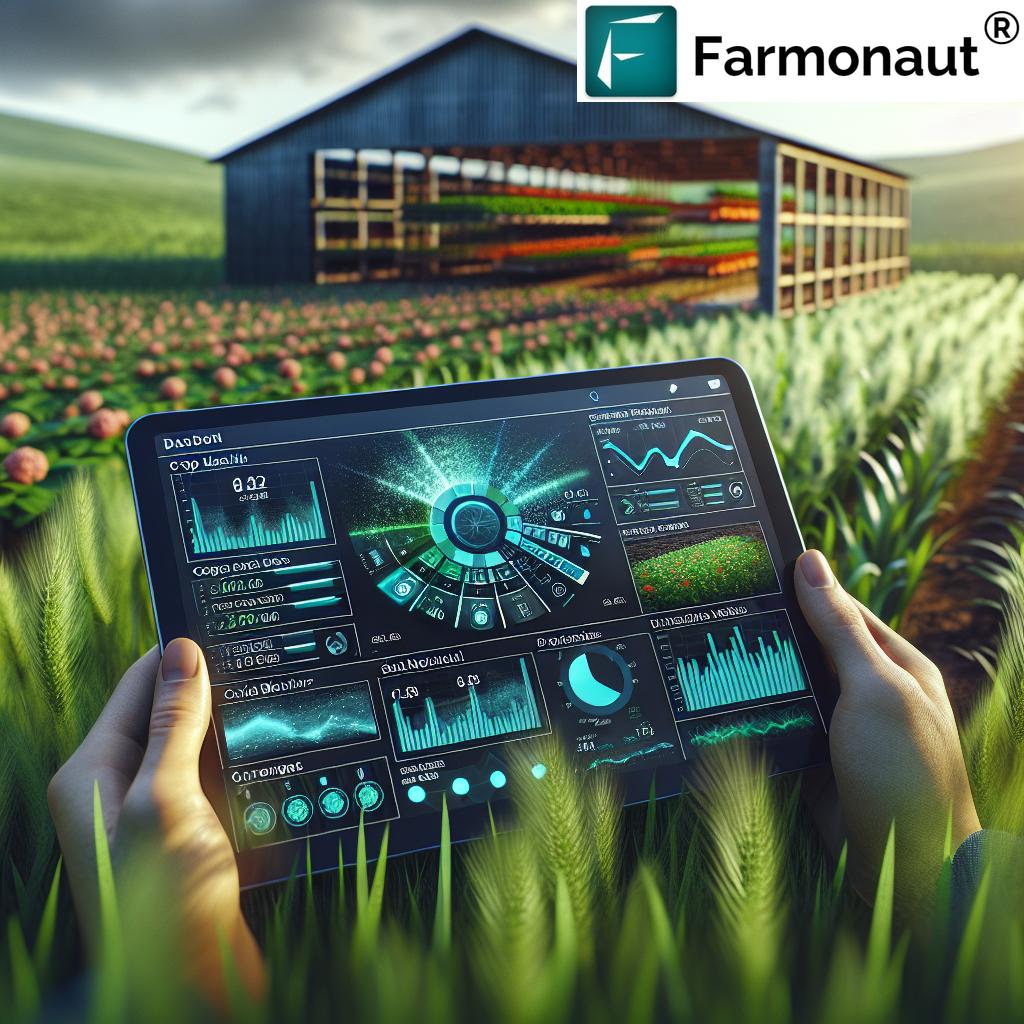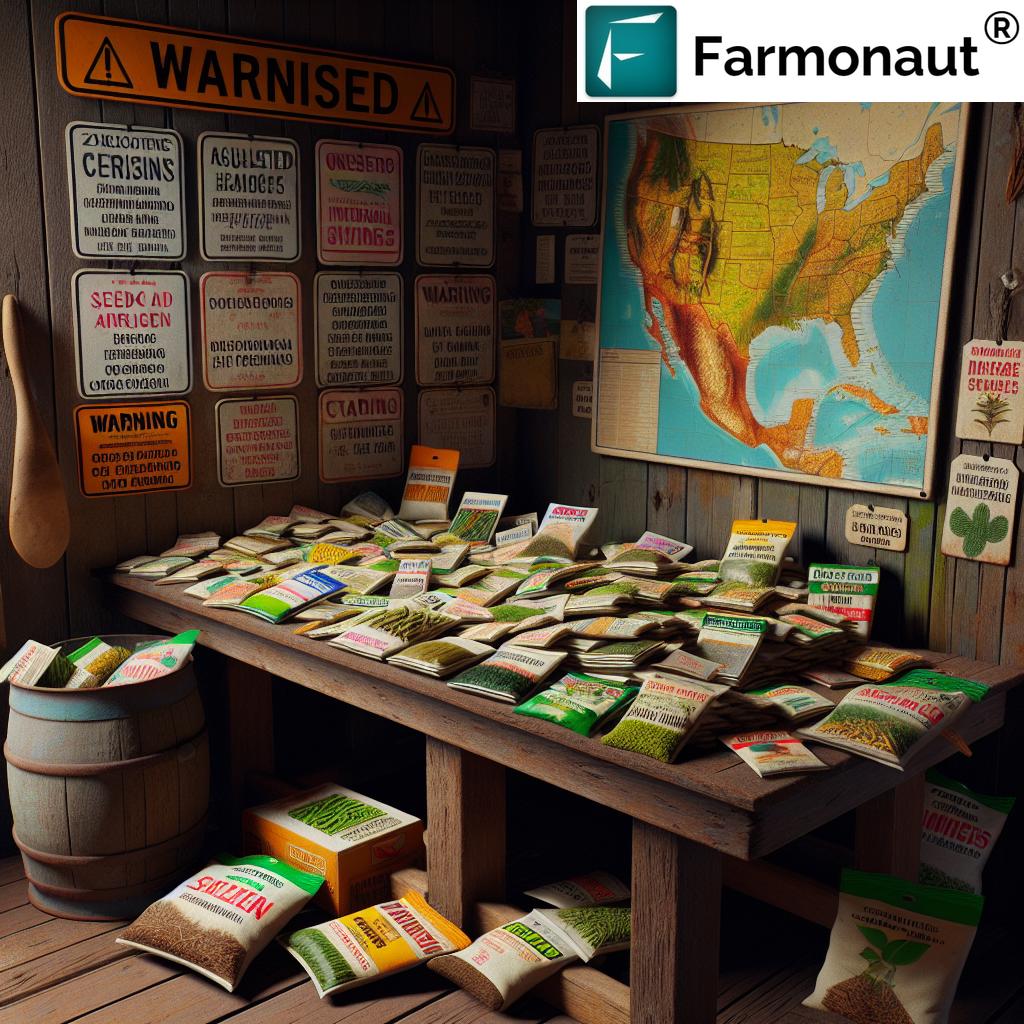CA Agriculture Inspection: Top Products & Innovations 2025
Introduction: Why CA Agriculture Inspection Remains Vital in 2025
California stands unparalleled as a global agricultural powerhouse, its diverse crops and California top agricultural products fueling both state and world economies. In 2025, the seamless blend of tradition and innovation ensures agricultural inspection California continues to protect our food, crop health, and consumer confidence. Rigorous protocols, exacting inspection standards, and relentless upgrades in technologies fortify California’s leadership as the premier producer in an increasingly complex world.
With more than 400 unique state crops—ranging from almonds and grapes to strawberries and lettuce—our capacity to maintain safety, quality, and sustainability has never been more critical. As demands increase from global markets for transparency and sustainability, agricultural inspections are truly the linchpin supporting not only California’s reputation but also the livelihoods of thousands of farmers, supply chains, and our collective ability to feed the nation and the world.
The Importance of Agricultural Inspection in California (2025)
The importance of agricultural inspection in California goes beyond routine quality checks; it is the first and last line of defense for the state’s industry and economy. In 2025, these inspections are more advanced, proactive, and effective than ever before.
- Comprehensive Protection: Agricultural inspection California encompasses a range of activities designed to monitor plant health, ensure pest control, verify compliance with environmental regulations, and prevent the introduction and spread of invasive pests and diseases that can devastate production and threaten export markets.
- Consumer Safety: By maintaining strict food safety protocols, inspections provide assurance to the public that California’s products meet and often exceed both national and international standards.
- Environmental Sustainability: In the face of climate change, water scarcity, and increasing market expectations, inspectors actively verify sustainable farming practices, water management, and soil health.
This robust system not only protects California top agricultural products but also preserves the state’s status as the leading producer—a true cornerstone both for the state and the world’s food supply.
Fun Fact About California Agriculture
California Top Agricultural Products: Inspection Challenges
California’s top agricultural products reflect the state’s diverse crops and unique inspection needs. From almonds and grapes to lettuce and strawberries, the inspection process is tailored for each crop’s specific risks—be it pest invasions, disease outbreaks, or contamination threats.
- Almonds: A signature California nut, almonds are especially vulnerable to pests like the navel orangeworm and the glassy-winged sharpshooter. Rigorous quarantine and inspection protocols prevent destructive infestations that could decimate yield.
- Grapes (Table & Wine): Pierce’s disease, a bacterial infection spread by sharpshooters, threatens both table grapes and wine vineyards. Early disease detection and management are prioritized to preserve quality, especially for export and premium domestic markets.
- Strawberries & Lettuce: These highly perishable fruits and vegetables require exceptional vigilance against microbial contamination, pesticide residue, and foodborne disease. Compliance with FDA and state food safety standards remains essential to maintaining consumer confidence.
- Dairy Products: While not crops, dairy remains a key California agricultural product and inspections ensure strict data-driven traceability, pathogen monitoring, and compliance with regulatory protocols.
Key challenges include monitoring vast areas, detecting anomalies earlier, efficiently assessing crop health, and enforcing sustainable practices. Manual inspection alone cannot keep up with the scale and variety—thus, the integration of advanced technologies is vital.
CA Agriculture Inspection Technologies Powering 2025
By 2025, the integration of remote sensing, drone surveillance, AI-based analytics, and blockchain has completely transformed how inspections are conducted. These innovative tools empower inspectors to detect anomalies earlier, assess large areas efficiently, and ensure precise pest management strategies, making the inspection process faster, more accurate, and cost-effective.
Key Technologies Behind Agricultural Inspection California in 2025:
- Remote Sensing: Harnesses space-based, multispectral satellite images to monitor crop health (e.g., NDVI, soil moisture), quickly detecting disease outbreaks and stress across large areas.
-
Drone Surveillance: Drones fitted with sensors fly over fields, enable precise detection of pest hotspots, water stress, and canopy anomalies unreachable by foot.
- AI & Machine Learning Analytics: Machine learning engines process massive volumes of crop, soil, and weather data to recognize patterns, predict diseases, assess yield risks, and optimize inspection frequencies—improving decision-making and minimizing manual detection errors.
-
Blockchain Traceability: Provides transparent, tamper-proof records of every crop’s journey from field to export, enabling instant tracking of compliance and safety at all points.
Discover more about blockchain-based traceability for California agriculture. -
Environmental Impact Trackers: Evaluation of on-field carbon emissions and water usage compliance helps keep farming practices sustainable.
Learn about carbon footprinting solutions for sustainable CA farms.
Emerging inspection technologies ensure early warning for pests, rigorous compliance with regulations, and traceable, safe produce for both domestic and export markets.
Comparative Overview Table: California’s Top Agricultural Products & Inspection Technologies 2025
| Product | Estimated 2025 Output | Inspection Technology | Primary Quality & Safety Benefits |
|---|---|---|---|
| Almonds | 2.8 Million Tons | Remote Sensing, Drone Surveillance, AI Analytics, Blockchain Traceability | Pest detection (navel orangeworm), early disease identification, residue compliance, export traceability |
| Grapes (Table & Wine) | 7 Million Tons (Grapes); 616 Million Gallons (Wine) | Drone Surveillance, Hyperspectral Imaging, AI Crop Health Analytics | Pierce’s disease control, yield estimation, microbial contamination prevention |
| Strawberries | 2.2 Billion Pounds | AI-powered Sensors, Remote Sensing, Microbial Testing Kits | Pesticide residue checks, rapid microbial contamination detection, sustainable water monitoring |
| Lettuce | 5 Million Tons | Remote Sensing, Drone Imaging, Automated Spray Monitoring | Real-time disease detection, chemical application traceability, food safety compliance |
| Dairy | $7.5 Billion Value | IoT Sensors, Blockchain Traceability, Satellite Feed Crops Monitoring | Pathogen detection, supply chain tracking, compliance with health regulations |
| Citrus & Specialty Fruits | 2.1 Million Tons | Drone Surveillance, Real-Time Data Analytics, Blockchain | Invasive pest prevention, disease monitoring, export compliance assurance |
Farmonaut’s Role in Next-Gen Inspection (2025 and Beyond)
At Farmonaut, we strive to democratize access to satellite-driven insights and AI-powered advisory for agricultural inspection California, making inspection smarter, more affordable, and actionable for everyone—from small farmers to large enterprises and institutions.
- Satellite-Based Monitoring: Our real-time crop monitoring uses high-resolution satellite imagery to provide actionable information on crop health, disease detection, and resource allocation.
- Jeevn AI Advisory System: We leverage AI and machine learning to analyze satellite and field data, delivering dynamic, tailored smart-farming strategies that increase crop quality and yield while optimizing sustainability.
- Blockchain-Based Traceability: Our traceability tools create trust and transparency for both domestic and export markets.
- Environmental Impact Monitoring: Farmonaut’s carbon footprint tracking helps ensure adherence to sustainable farming practices in accordance with California’s robust environmental regulations.
- Fleet Management Tools: Our fleet management platform allows for efficient and compliant tracking of equipment, reducing risk and optimizing operational costs.
- Loan & Insurance Verification: We empower financial institutions to use satellite-based verification for agricultural loans and insurance, reducing fraud and helping farmers access critical financial support.
Our subscription-based platform is accessible via web and mobile apps. We also provide an API for seamless integration of crop monitoring data into any global agriculture system.
For developers and enterprise users, API documentation offers a full suite for scaling up inspection and analytics capabilities.
Supporting the CA Agricultural Economy Through Inspection
The design and efficiency of California agricultural inspection processes are not just about compliance but also about supporting both the economy and people relying on agriculture as a cornerstone of livelihood.
Here’s how optimized inspections serve California in 2025:
- Crop Security & Reduced Loss: Technologies facilitate predictive detection of pests and diseases, helping farmers address challenges early and prevent costly outbreaks.
- Market Reputation: The state’s rigorous inspection protocols preserve California’s standing in global markets as a source of high-quality, safe, and sustainable products.
- Export Competitiveness: With increasing scrutiny on food safety and traceability standards abroad, real-time data-driven inspections help avoid export hold-ups, recalls, or embargoes.
- Sustainability Leadership: Environmental impact monitoring and resource compliance (including water regulations for drought impacted regions) ensures future-proofing of California’s agricultural production.
- Supply Chain Stability: By reducing the risk of contamination or disease, inspections bolster confidence along the entire supply chain, from farmer to grocery shelf, helping to keep costs stable and ensure food security.
FAQ: CA Agriculture Inspection 2025
What is agricultural inspection California, and why is it vital?
Agricultural inspection California is a comprehensive set of monitoring and compliance activities across crop health, pest and disease management, food safety, and sustainability regulations. It’s vital to protecting California’s role as a leading producer, preventing the introduction of invasive species and diseases, and ensuring food safety for consumers and global markets.
What advanced technologies are used in CA agriculture inspection 2025?
In 2025, California employs remote sensing via satellites, drone surveillance, AI-powered data analytics, blockchain traceability, and real-time microbial/pesticide monitoring to safeguard its crops and certification processes.
How does California ensure the safety and quality of exported agricultural products?
With rigorous inspection protocols enforced by both human inspectors and AI-driven technology, California tracks every stage of the crop journey, rapidly detecting and resolving potential risks before produce reaches export markets.
What crops require the strictest inspection in California?
Almonds, grapes (table & wine), strawberries, lettuce, and dairy are subjected to stringent protocols, with inspection tailored to combat key pests, diseases, contamination, and regulatory standards.
How does Farmonaut contribute to California agricultural inspections in 2025?
At Farmonaut, we offer satellite-driven inspection, real-time crop health monitoring, AI advisory to boost farm efficiency, blockchain tracking for supply chain transparency, and carbon/emissions solutions for regulatory compliance and sustainability.
How can farms, businesses, or officials access Farmonaut’s technologies?
Through our web and mobile apps, enterprise managers, growers, and governments can subscribe to scalable inspection and management solutions. APIs and developer docs are available for integration into custom platforms.
Conclusion: Securing California’s Agricultural Future
As we enter 2025, agricultural inspection California remains at the heart of the state’s tremendous agricultural sector, balancing crop safety, production quality, and sustainability against growing global scrutiny and environmental pressures. The fusion of remote sensing, AI, drones, and blockchain in CA agriculture inspection signals a bold new era, where every box of almonds, crate of strawberries, or bottle of wine is not just the product of a farm—but of a forward-thinking, fully verified system.
By maintaining rigorous inspection protocols, adhering to compliance standards, and leveraging the best in emerging technologies, California ensures its position as the world’s leading producer is secure for generations to come. Together with technology platforms like those from Farmonaut, the path ahead for California agriculture is not only more productive and safe—but also more transparent and sustainable than ever.
Looking for advanced solutions to monitor, inspect, and future-proof your crops? Try Farmonaut today and experience data-driven, sustainable agriculture for California and beyond.














